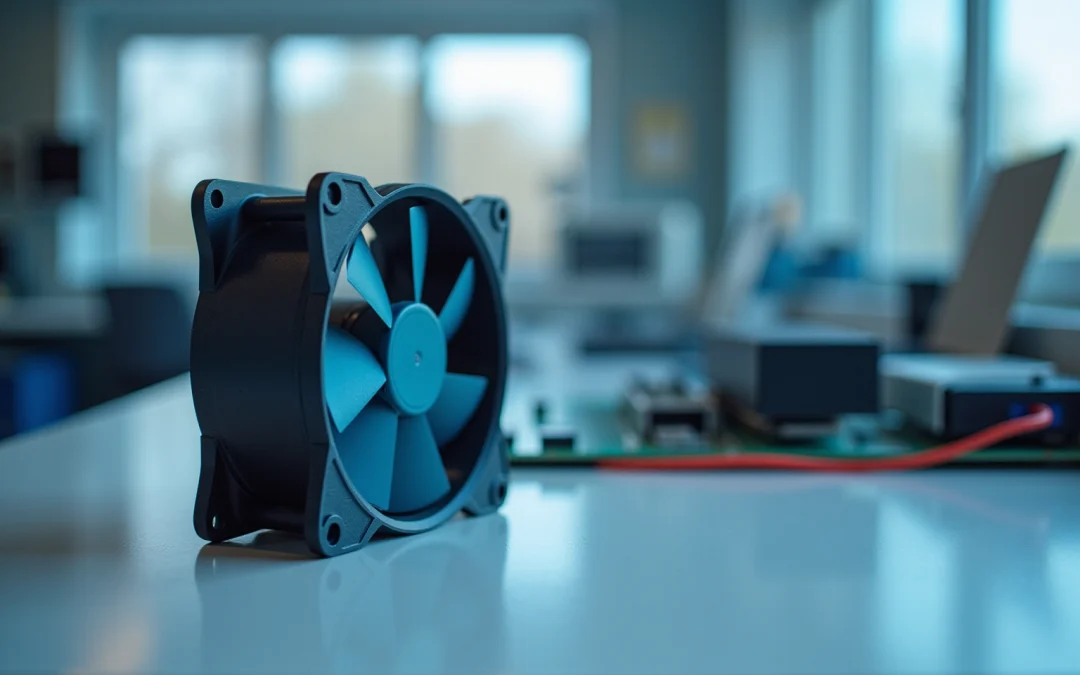Overview
The article elucidates the myriad benefits of mini blower fans for cooling electronics, emphasizing their compact size, energy efficiency, versatility, and reliability. These advantages are substantiated by compelling evidence demonstrating their efficacy in enhancing airflow, minimizing noise, and delivering cost-effective solutions for temperature regulation across a wide array of applications within the electronics industry.
Introduction
Mini blower fans have emerged as essential components in the field of electronics cooling, where effective temperature management is vital for optimizing performance and extending device longevity. These compact devices not only provide significant space-saving benefits but also contribute to energy efficiency and improved airflow, positioning them as a strategic choice for engineers across diverse industries.
As technology progresses, a critical question arises: how can these small yet powerful fans continue to fulfill the escalating demands for efficiency and reliability in contemporary electronic applications?
Gagner-Toomey Associates: Leading Provider of Mini Blower Fan Solutions for Electronics Cooling
stands out as a premier supplier of tailored for electronics temperature management. As the world’s largest producer of both standard and custom air-movers, Gagner-Toomey offers a vast array of and , meticulously optimized for . Their commitment to innovative technologies and excellence guarantees that engineers have access to that address the .
With a comprehensive portfolio that includes starting from sizes as small as 15x3mm, Gagner-Toomey Associates empowers engineers to enhance the reliability and efficiency of electronic systems, solidifying their position as a leading manufacturer in the realm of .

Space Efficiency: How Mini Blower Fans Optimize Limited Electronics Environments
are expertly designed to be compact, making them ideal for electronics environments where space is at a premium. As the world’s largest manufacturer of both standard and custom air-movers, Gagner-Toomey Associates offers an and solutions, all optimized for superior performance and efficiency. These devices range in size from 15 to 280mm, with IP protection available upon request. Their small footprint enables without occupying excessive space, allowing engineers to incorporate a mini blower fan to develop more . Such space efficiency is vital in applications spanning:
- Portable electronics
- Automotive
- Telecom
- Industrial sectors
where every millimeter is critical.
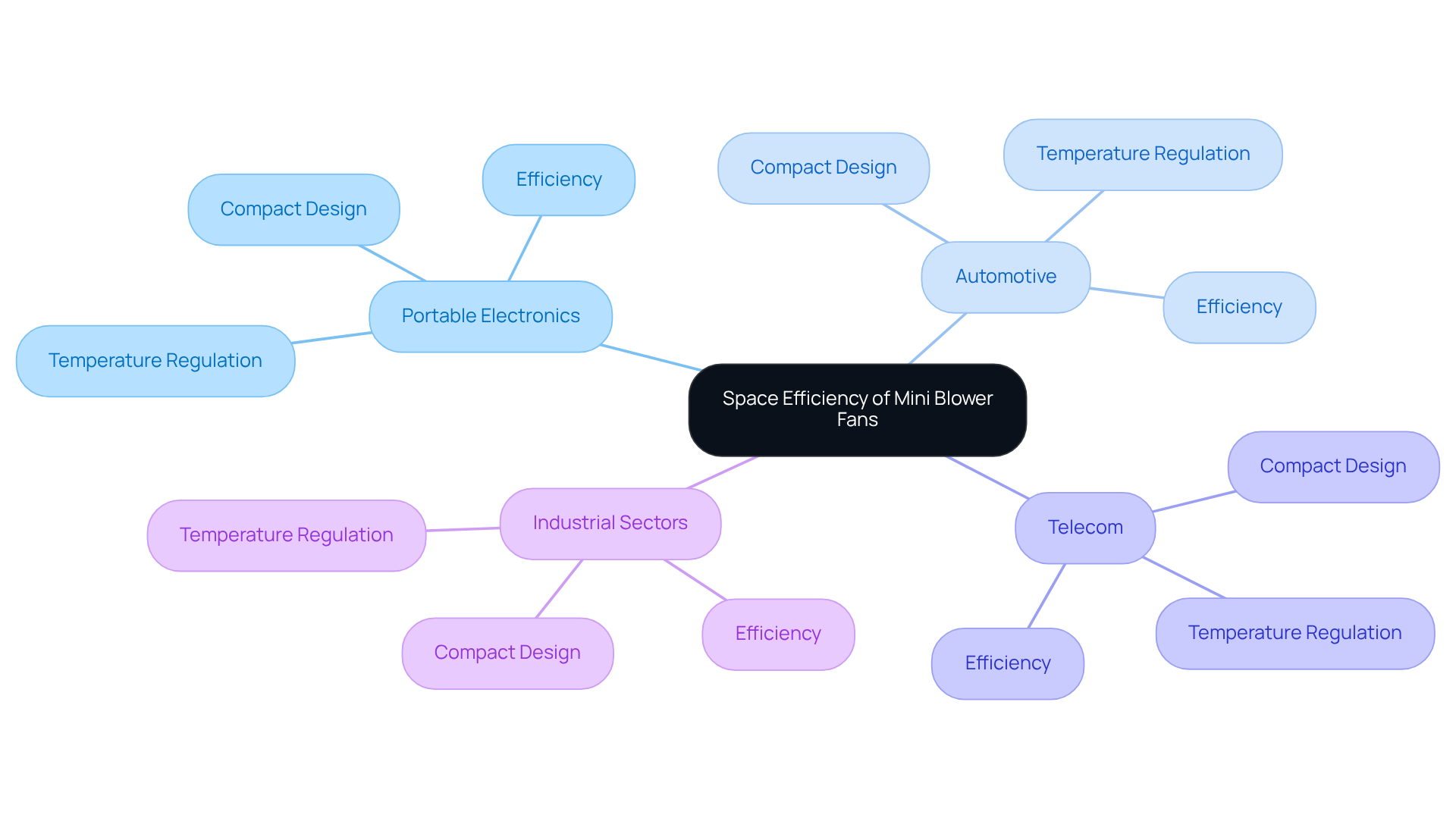
Energy Savings: The Cost-Effective Benefits of Mini Blower Fans in Cooling Systems
are remarkably efficient in reducing temperature while simultaneously aiding in . Their innovative design allows for reduced when compared to conventional temperature regulation techniques, which can yield significant over time. By integrating small air circulation devices into temperature regulation systems, engineers can achieve optimal and lower . This makes small air circulators a strategic choice for .
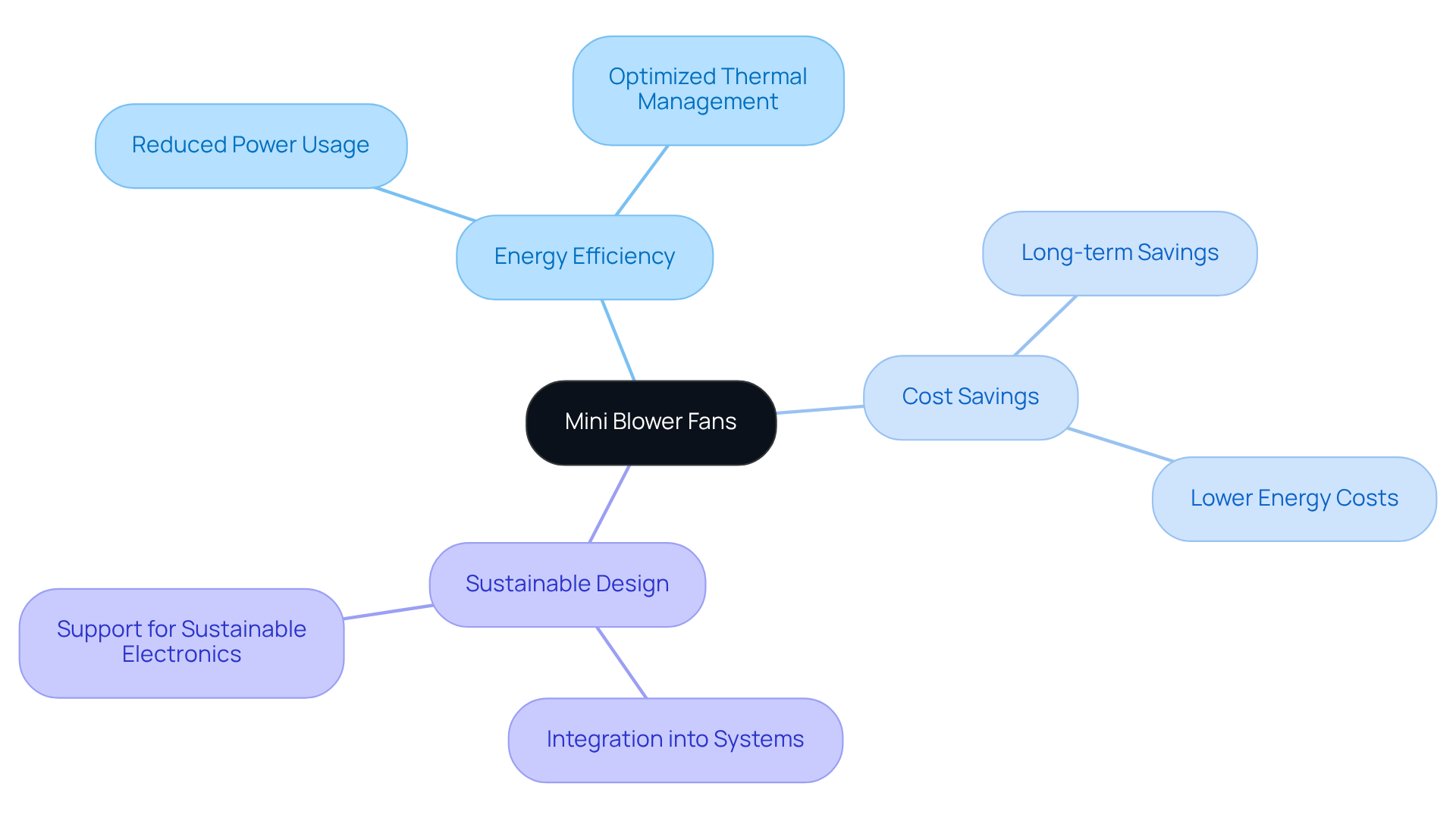
Versatility: Applications of Mini Blower Fans Across Different Electronic Devices
are remarkably adaptable, finding their place in a wide array of electronic devices, from computers and servers to medical apparatus and consumer electronics. This versatility addresses diverse , whether in high-performance computing or sensitive medical applications.
‘Gagner-Toomey Associates’ expertise in providing across sectors such as Telecom, IT/Data Center, and Medical ensures that for tailored to their specific applications. Consequently, this adaptability empowers engineers to discover across multiple industries.
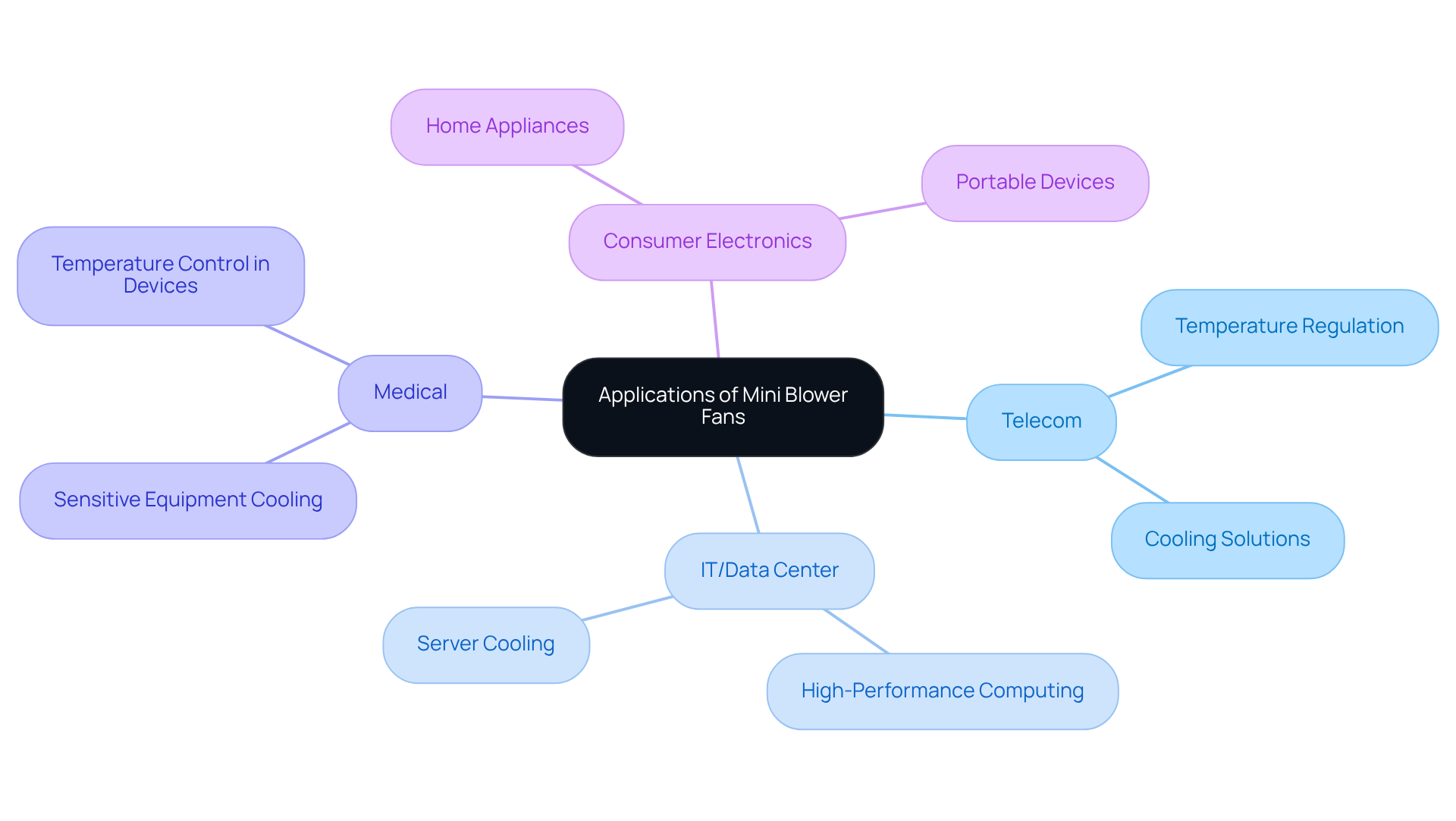
Noise Reduction: The Silent Advantage of Mini Blower Fans in Electronics Cooling
Mini air circulators stand out for their exceptionally quiet performance, making them particularly suitable for environments where is paramount. In contrast to their larger counterparts, which frequently generate significant noise, these compact devices are engineered to minimize sound while delivering efficient airflow. This proves invaluable in settings such as offices, homes, and hospitals, where excessive noise can hinder focus and comfort. Research indicates that , underscoring the critical role of in fostering a serene atmosphere.
Moreover, advancements in have achieved noise reductions of 2 decibels or more, further emphasizing the effectiveness of these units. The , exemplified by the XMC-2400 micro-cooling chip, operate quietly and are 90% smaller than traditional non-silicon active-cooling alternatives, effectively eliminating noise concerns. This capability allows for seamless integration into noise-sensitive environments such as laboratories and medical facilities.
By leveraging cutting-edge technologies, not only provide but also contribute to a more pleasant user experience, establishing themselves as essential components in modern electronic applications.
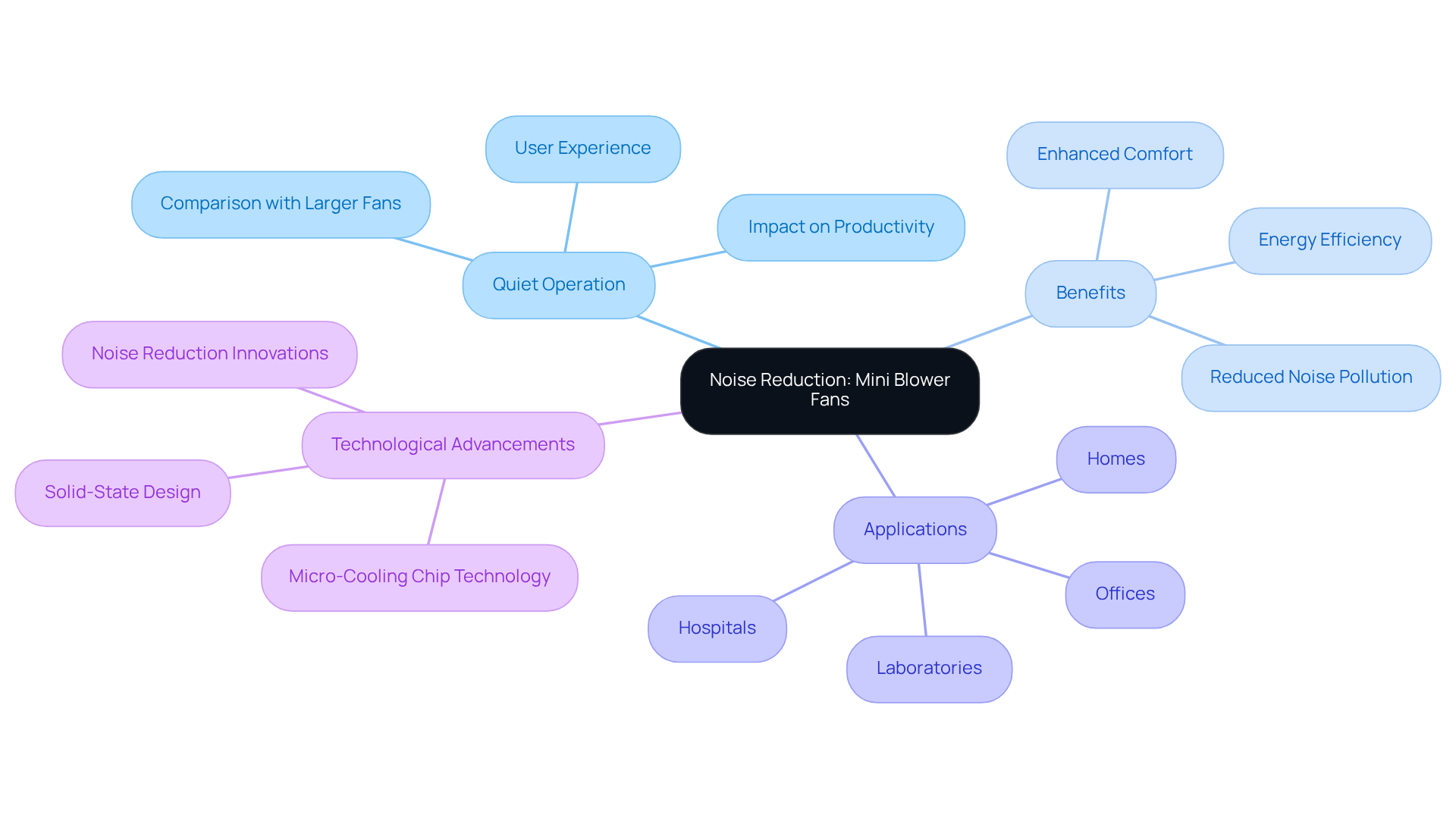
Improved Airflow: Maximizing Cooling Efficiency with Mini Blower Fans
, produced by Gagner-Toomey Associates, are , which is a critical factor in enhancing for electronic devices. Their innovative design facilitates targeted airflow, effectively dissipating heat from essential components. By refining airflow patterns, mini blower fans play a pivotal role in maintaining ideal operating temperatures, which not only boosts performance but also .
For instance, the integration of small air circulation devices in (PSUs) has demonstrated significant improvements in temperature regulation, particularly when combined with conduction heat management techniques. This hybrid approach maximizes , ensuring that sensitive components remain within safe temperature limits, thereby enhancing Mean Time Between Failures (MTBF).
Furthermore, Gagner-Toomey Associates offers a and Centrifugal devices, with sizes ranging from 15 to 280mm for units and 15 to 225mm for devices, along with IP protection options available upon request. Recent advancements in have led to even greater efficiency, allowing engineers to tailor refrigeration solutions to specific applications.
The consensus among specialists, including power electronics engineers who emphasize that ‘ is vital for the advancement of next-generation technology,’ underscores the importance of directed airflow in optimizing heat dissipation, making mini blower fans an essential resource in the electronics thermal management field.

Reliability: Ensuring Consistent Performance with Mini Blower Fans
Dependability is a fundamental aspect of electronics . The is a small ventilation device that is meticulously engineered to ensure .
Constructed from durable materials, these devices are designed to withstand the rigors of continuous operation, which is critical in environments where even brief downtimes can lead to significant .
Research indicates that mini blower fans exhibit considerably lower failure rates compared to conventional temperature regulation methods, establishing them as a preferred choice for .
Recent advancements in mini blower fan technology have further bolstered their performance consistency, with manufacturers reporting .
This reliability is not merely theoretical; practical applications demonstrate that mini blower fans maintain even under challenging conditions, ensuring that electronic components operate within safe temperature ranges.
As the electronics sector continues to evolve, the role of mini blower fans in maintaining system integrity and performance remains indispensable.
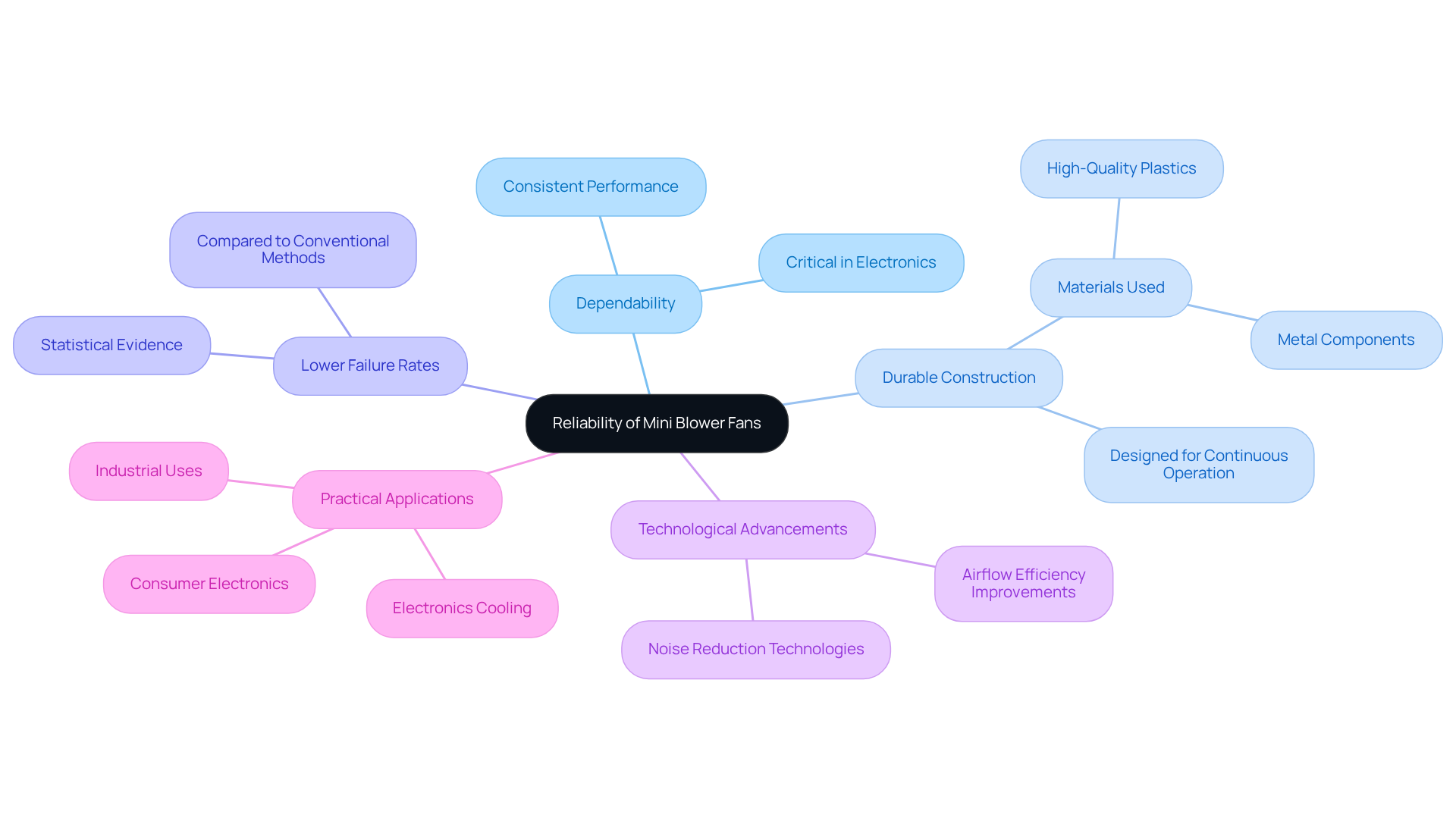
Easy Installation: Simplifying Electronics Cooling with Mini Blower Fans
address a crucial need for , being designed for straightforward setup that significantly simplifies the installation process. Their empower engineers to seamlessly incorporate mini blower fans into their projects, thereby minimizing the necessity for extensive modifications. This not only accelerates project timelines but also results in .
For instance, during a recent ventilation enhancement initiative at Jordan Bowl, the introduction of small led to a marked improvement in temperature control, bringing the attic temperature close to the threshold for leaving the icing envelope after extensive repair work and the installation of .
Dr. Emily Clark, a Thermal Technologist, noted that advancements in are vital for . As a result, engineers are increasingly selecting mini blower fans as compact air circulation devices to improve efficiency and performance in their designs.
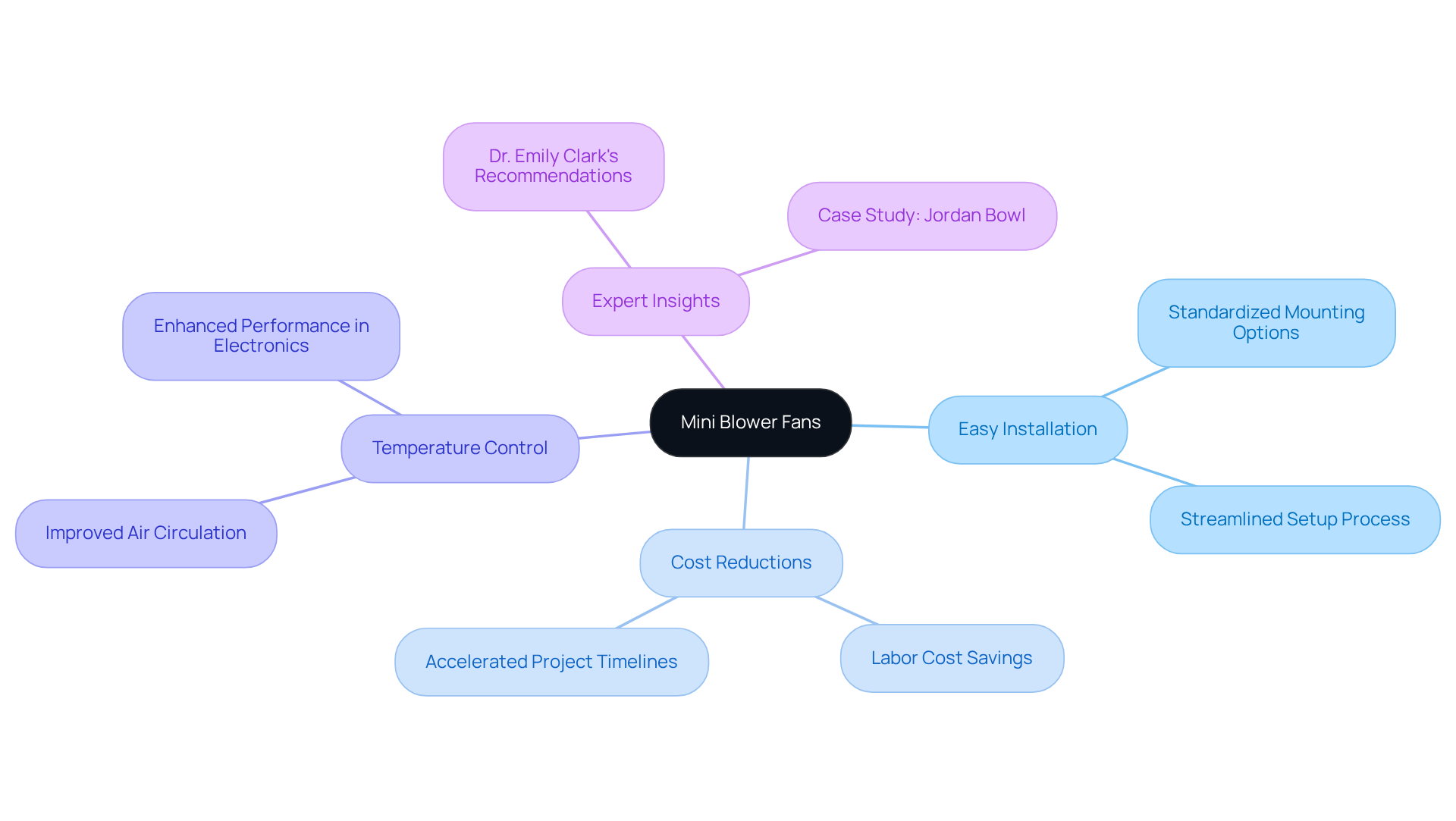
Cost-Effectiveness: Budget-Friendly Cooling Solutions with Mini Blower Fans
Compact air circulators present a for , particularly for engineers operating under budget constraints. Their affordability, combined with substantial —achieving up to a compared to traditional AC fans—positions them as a strategic choice across various applications.
By incorporating , engineers can achieve effective temperature regulation while maintaining , ultimately ensuring projects remain within financial limits. Furthermore, the associated with these devices enhance their appeal, making them a pragmatic option for budget-conscious engineering projects.
As noted by Michael G. Kent, “Occupants primarily relied on ceiling devices when the setpoint temperature was raised,” underscoring the importance of efficient temperature control solutions in sustaining optimal performance.
Additionally, the adoption of energy-saving technologies, such as a mini blower fan, not only supports financial objectives but also contributes to the reduction of greenhouse gas emissions, aligning with sustainability goals in engineering initiatives.
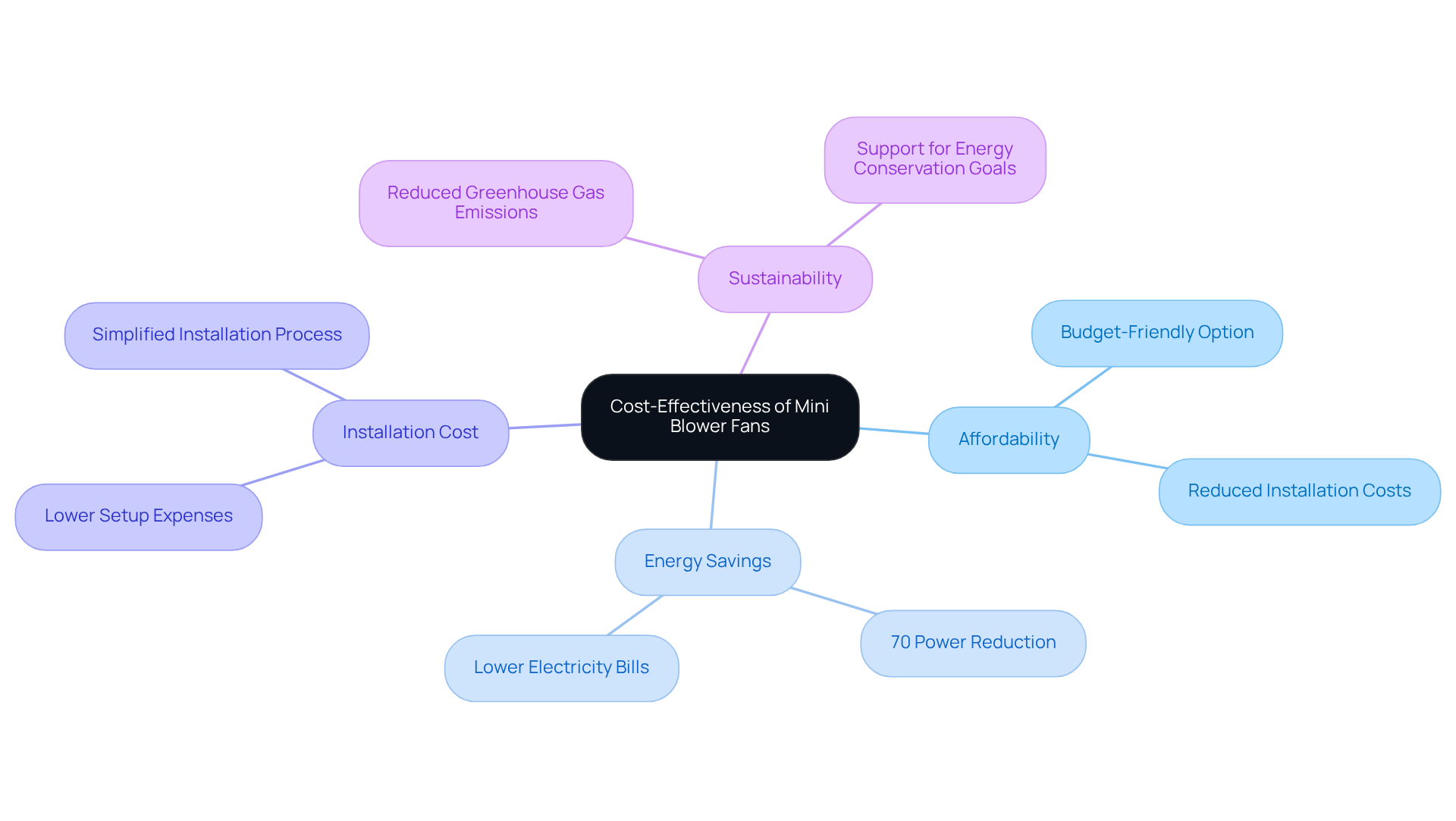
Technological Advancements: The Future of Mini Blower Fans in Electronics Cooling
The outlook for small in is exceptionally promising, driven by continuous that . Innovations in materials and design are set to significantly elevate the functionality of these devices, making them increasingly appealing to engineers. As the electronics industry progresses, the will play a pivotal role in meeting the , thereby ensuring optimal performance and reliability.

Conclusion
Mini blower fans represent a transformative solution for electronics cooling, offering unparalleled benefits that cater to the evolving demands of the industry. Their compact design, energy efficiency, and versatile applications make them indispensable in optimizing thermal management across a variety of electronic devices. By integrating mini blower fans, engineers can ensure effective temperature regulation while enhancing the reliability and performance of their systems.
Key insights from the discussion highlight the significant advantages of mini blower fans, including:
- Their space-saving capabilities
- Cost-effective operation
- Quiet performance
These features not only contribute to improved airflow and energy savings but also facilitate easy installation, making them a practical choice for engineers working within tight constraints. The reliability of these devices further solidifies their role in maintaining optimal operating conditions for sensitive electronic components.
As technology continues to advance, the potential for mini blower fans in electronics cooling will only grow. Embracing these innovative solutions is essential for engineers aiming to enhance efficiency, reduce costs, and meet the demands of next-generation electronic systems. Investing in mini blower fans not only supports sustainability goals but also positions projects for success in an increasingly competitive market.
Frequently Asked Questions
What is Gagner-Toomey Associates known for?
Gagner-Toomey Associates is a leading provider of mini fan solutions specifically designed for electronics temperature management, and is recognized as the world’s largest producer of both standard and custom air-movers.
What types of fans does Gagner-Toomey offer?
Gagner-Toomey offers a wide array of DC input tube axial fans and centrifugal devices that are optimized for performance, efficiency, and low noise.
What are the size specifications for Gagner-Toomey’s mini blower fans?
Gagner-Toomey’s miniature fan solutions start from sizes as small as 15x3mm and can go up to 280mm.
How do mini blower fans contribute to space efficiency in electronics?
Mini blower fans are compact and designed to optimize limited electronics environments, allowing for effective temperature regulation without taking up excessive space, which is essential in applications where every millimeter counts.
In what applications are mini blower fans particularly beneficial?
Mini blower fans are beneficial in various applications including portable electronics, automotive, telecom, and industrial sectors.
What energy-saving benefits do mini blower fans provide?
Mini blower fans are efficient in reducing temperature and conserving energy, leading to significant cost savings over time compared to conventional temperature regulation methods.
How do small air circulators impact sustainable electronics design?
By integrating small air circulation devices into temperature regulation systems, engineers can achieve optimal thermal management and lower energy costs, making them a strategic choice for sustainable electronics design.

